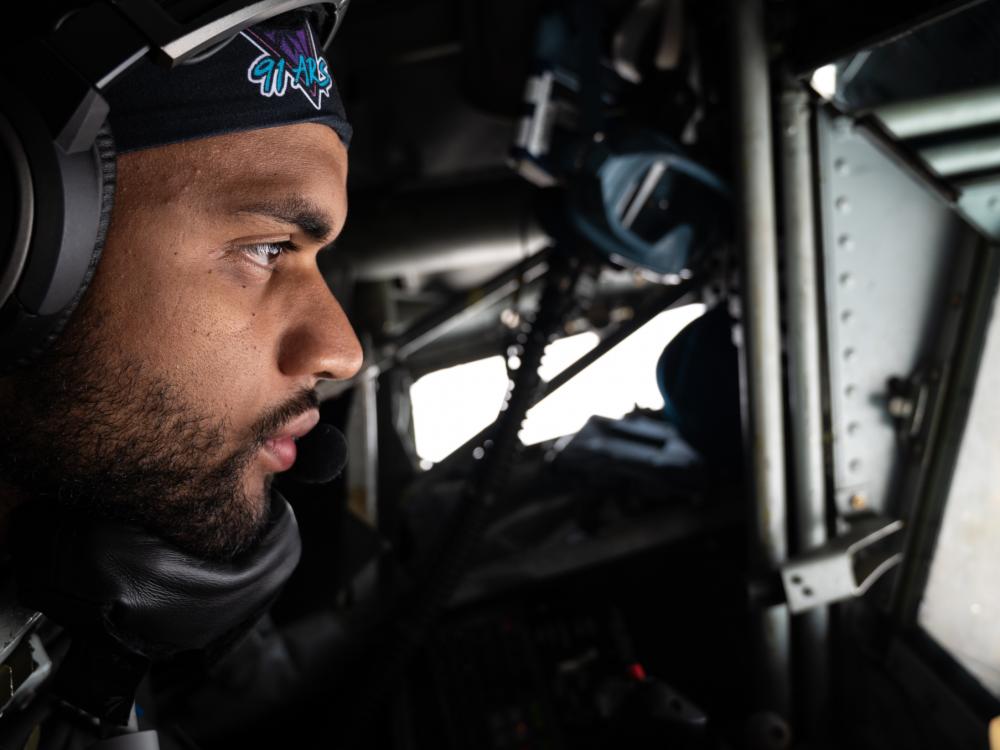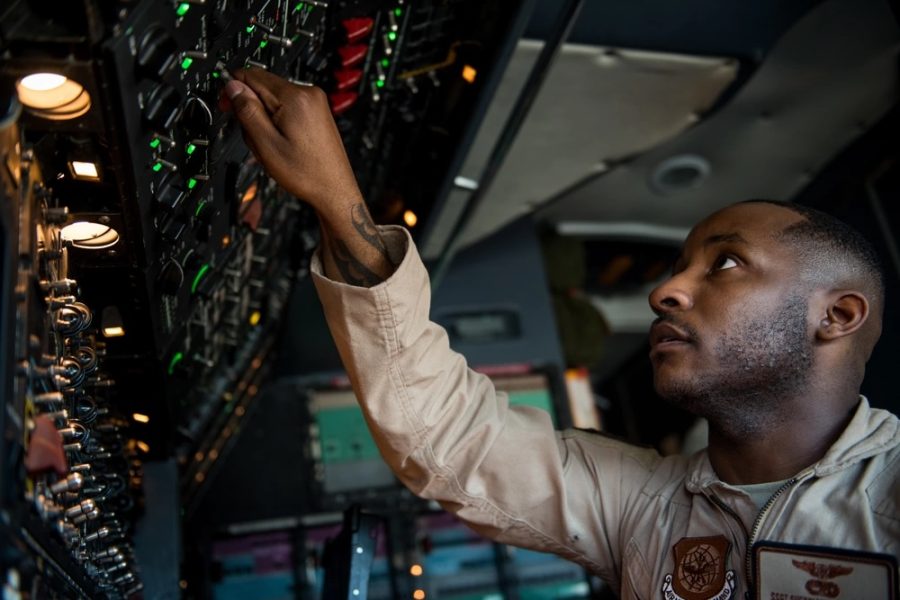Lawmakers on the House Armed Services Committee voted to create a three-year Air Force test program studying the effects of beards on safety, discipline, morale, and inclusivity, as part of their markup of the 2025 National Defense Authorization Act on May 22.
The provision, introduced by Rep. Marc Veasey (D-Texas), was included in a package of amendments adopted unanimously by the committee in an uncontroversial voice vote. In order to become law, it must survive passage in the House of Representatives and be reconciled with the Senate version of the NDAA. But in making it through the committee process, it cleared a major hurdle.
Specifically, the provision instructs the Air Force to “establish a pilot program to allow members of the Air Force and Space Force to grow beards,” in select units across a diverse range of environments and mission sets. The Air Force would then submit an initial report within a year of the program’s start, followed by a final report after the three-year program ends.
Elements of the report would include an evaluation of whether beards effect the airtight seals of gas masks or similar equipment; how they effect “discipline, morale, and unity within the ranks”; and “a determination whether allowing members to grow beards improves inclusivity.” It would also include identifying any negative perception or bias towards members with beards, as well as strategies to mitigate that bias.
Besides the Air Force beard pilot program, Veasey also introduced—and the committee approved—an amendment requiring the Navy to brief the House Armed Services Committee on a study being conducted by the Naval Health Research Center on the effect of beards on gas mask seals. The briefing would be required no later than March 1, 2025.

The amendments will likely be celebrated by many Airmen who have advocated for years for the service to allow beards without a waiver. Currently, Airmen are allowed to grow beards if they receive a religious exemption or a medical waiver for conditions such as pseudofolliculitis barbae (PFB), also known as razor bumps, a skin condition caused by ingrown hairs that makes shaving painful and can lead to scarring if skin is not given a chance to heal.
Waivers have become easier to obtain in recent years. Former Chief Master Sergeant of the Air Force JoAnne Bass’ team repealed policies that had barred bearded Airmen and Guardians from serving in some positions and they made it easier to qualify for beard waivers. Earlier this year before Congress, Air Force Chief of Staff Gen. David W. Allvin estimated that the number of shaving waivers for PFB has seen an “almost 50 percent increase in the past several years” due to increased awareness of the waiver process.
But a 2021 study conducted by military doctors found that, due to a lingering cultural stigma, Airmen with shaving waivers took longer to earn promotions and often could not land high-profile positions as recruiters, military training instructors, Honor Guard members, or positions on the Thunderbirds flight demonstration team.
Since Black men are more likely to suffer from PFB, the beard ban is effectively discriminatory towards Black Airmen, the study authors argued.
“[T]he promotion system is not necessarily inherently racially biased, but instead biased against the presence of facial hair which will likely always affect the promotions of Blacks/African-Americans disproportionately because of the relatively higher need for shaving waivers in this population,” the study stated.
Yet there remains resistance among some leaders to the idea of allowing facial hair.
“If you want to look cute with your skinny jeans and your beard, by all means, do it someplace else,” then-Senior Enlisted Advisor to the Chairman of the Joint Chiefs of Staff Ramón Colón-López said in 2023 “But quit wasting our time on something that doesn’t have anything to do with kicking the enemy’s ass.”
Lt. Col. Simon Ritchie, the dermatologist who led the 2021 study, pushed back on Colón-López’ view.
“This has never been about looking cute or about fashion, this has always been about eradicating every possible vestige of racial discrimination in the Air Force and also about allowing those with religious beliefs to express those while in uniform,” Ritchie told Air & Space Forces Magazine at the time.
“We are forcing out talented Airmen (proven with data), we are not promoting our shaving waiver holders (proven with data), and because our waiver holders are predominantly Black this directly translates into racial discrimination,” he said.
Proponents of banning beards sometimes argue that facial hair disrupts the seal of a gas mask or oxygen mask, but Ritchie has found no direct scientific evidence to support the claim. They “may have anecdotal evidence of one to five people who they see fail the fit test,” he told Task & Purpose in 2022. “That can’t be extrapolated to hundreds of thousands of Airmen.”
Fellow NATO militaries in Canada, Germany, and Norway allow beards and show no direct evidence that facial hair disrupts gas mask seals, said Ritchie, who was stationed in Germany at the time. And a 2018 study showed that 98 percent of study participants who had an eighth-inch of beard achieved acceptable fits on civilian half-face negative-pressure respirators, which Ritchie said are comparable to the M-50 gas masks used in the military today.
A program such as the one called for in the NDAA amendment is “a good step,” Ritchie said. “At a minimum it will help to socialize the idea and maybe help to convince leaders that we can operate professionally and effectively with facial hair.”
The dermatologist cautioned that the high rates of turnover within military units may make it challenging to ascertain impacts on leadership, professionalism, and other factors within the one-year period before the initial findings are due. Still, some metrics “could be used as end points in such a scenario, like unit readiness rates, that could provide at least a high-level perspective of the impacts of allowing facial hair,” he said.
Meanwhile, the effort to remove the stigma surrounding facial hair in the Air Force is “a work in progress,” Allvin said in April. The chief also expressed concern about Airmen taking advantage of the religious exemption for facial hair.
“My interest, as the chief, is to ensure that we respect that and we honor that,” he said. “So not only do we ensure that those who qualify for those, actually achieve those: the exceptions to policy and the waivers, but we also make sure that others aren’t exploiting it.”
Gen. B. Chance Saltzman, the Chief of Space Operations, expressed a similar view.
“The key is, one, having a good process to grant the waivers expeditiously and appropriately,” he said at the hearing. “And then second is, remove any stigma, and make sure that those people that are accommodated are still respected and there’s no adverse impacts.”
Both those steps involves educating Airmen and Guardians, Saltzman said. Veasey asked at the time whether Saltzman was confident in the education effort.
“I think it’s a work in progress, because we’ve got to reach the entire group of people,” the CSO said. “But I think we’re making the right strides.”

